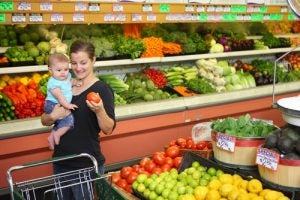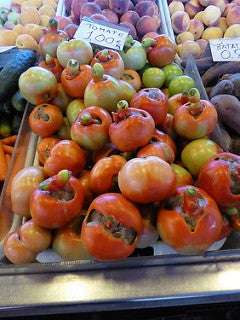
Photo credit: USDA
The vast majority of the media stories surrounding Amazon’s acquisition of Whole Foods have focused on how the deal could affect the cost of food, home delivery services, competition in the retail space and our overall shopping experiences.
While it’s still too early to predict what exactly Amazon will do with hundreds of new brick and mortar grocery stores, here are three possible implications for farmers and the land they rely on to grow our food.
1. Demand for organic could skyrocket
As of last month, organic products represented more than 5 percent of all grocery sales in the US – and organics have been one of the strongest areas of growth for many retailers and grocery stores.
Now, with Whole Foods under the Amazon umbrella, that demand could increase exponentially. POLITICO noted that if this happens, “domestic organic acreage isn’t positioned to handle such an expansion.”
- Although organic sales have grown rapidly, the amount of organic cropland has remained largely the same.
- The process for farmers to transition to organic requires a three-year transition period, during which products do not earn a premium in the marketplace – thereby limiting the number of farmers willing to make the switch.
- This all means there are limitations for companies looking to secure an adequate supply of organic foods for their customers.
Furthermore, scaling up organic farming is not enough to feed a hungry planet. Organic is an important part of the food system, but it is not a silver bullet leading us to a food-secure world.
On a related note, in all of the buzz about the merger let’s not forget that, as Washington Post columnist Tamar Haspel put it, “We need to feed a growing planet. Vegetables aren’t the answer.” That’s why we’re so focused on ensuring that commodity crops are grown sustainably.
[Tweet “3 ways Amazon’s purchase of Whole Foods could affect agriculture and the environment, via @MaggieMonast.https://edf.org/8NY”]
2. Food waste could be reduced

Amazon could use its logistics to revolutionize food distribution and minimize food waste. [Photo credit]
Despite some waste-related challenges with AmazonFresh, Amazon now has an extensive network of real-estate locations to supplement their already massive product distribution network. This means they could expand their existing program to donate to food banks by including Whole Foods’ inventory, too.
Applying Amazon’s logistics platforms to grocery shopping could also mean a bigger demand for “ugly” produce, one of the top sources of waste at the retail level. They could for example deliver ugly produce to consumers at a discount – especially now that the reach for delivery has grown exponentially.
This would be great news for improving food security across the country, meaning less pressure on our agriculture system. This could also result in less pressure to convert lands for farming, thereby keeping important wildlife habitat intact.
Of course, reducing emissions from food waste could all be offset by increased emissions from a growth in home deliveries (given emissions from transportation) and packaging.
3. Consumer demand for transparency will grow
Many consumers had a strong reaction to Amazon’s acquisition of Whole Foods, immediately vocalizing myriad concerns. At EDF, we believe all consumers should have access to healthy, affordable food that was produced in the most sustainable way possible.
It’s too early to tell if consumers’ concerns will be warranted, but one thing is for sure: Shoppers are paying attention – which will result in a greater demand for transparency and the ability to better dissect food supply chains to ensure that environmental impacts are minimized.
Ideally, this will mean food companies across the board will directly support the farmers growing their products – to help them minimize nutrient runoff, maximize yields, apply proven precision ag technologies or purchase cover crops.
Related:
Why sustainable food can’t be a luxury >>
Organic or conventional. Which production system can feed the world sustainably? >>
3 ways NGOs can help sustainable supply chains grow >>










2 Comments
This is great information. if only we could avoid food wastage, we could be able to feed the whole world.
Thanks for this
I’m an organic shopper. If fruits and vegetables are GMO free, I’d be more open to purchase some items that are not organic. That labeling is important to me. Secondly, imperfect or ugly produce sold in bulk would be welcomed to folks who can or freeze, if the prices were discounted. Third, I care about sustainable farming practices and supporting local farmers. Where my food comes from is important. Fourth, the world doesn’t need more packaging in landfills. Amazon using recyclables is crucial.